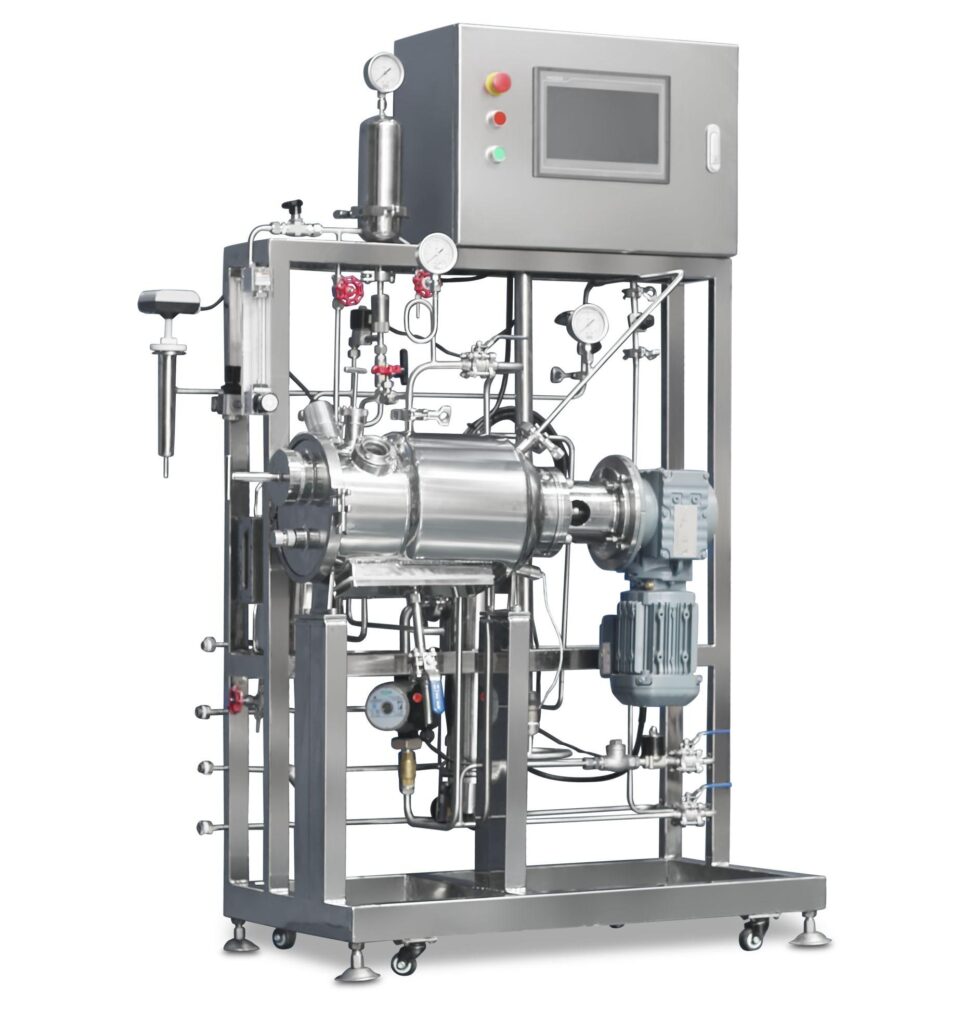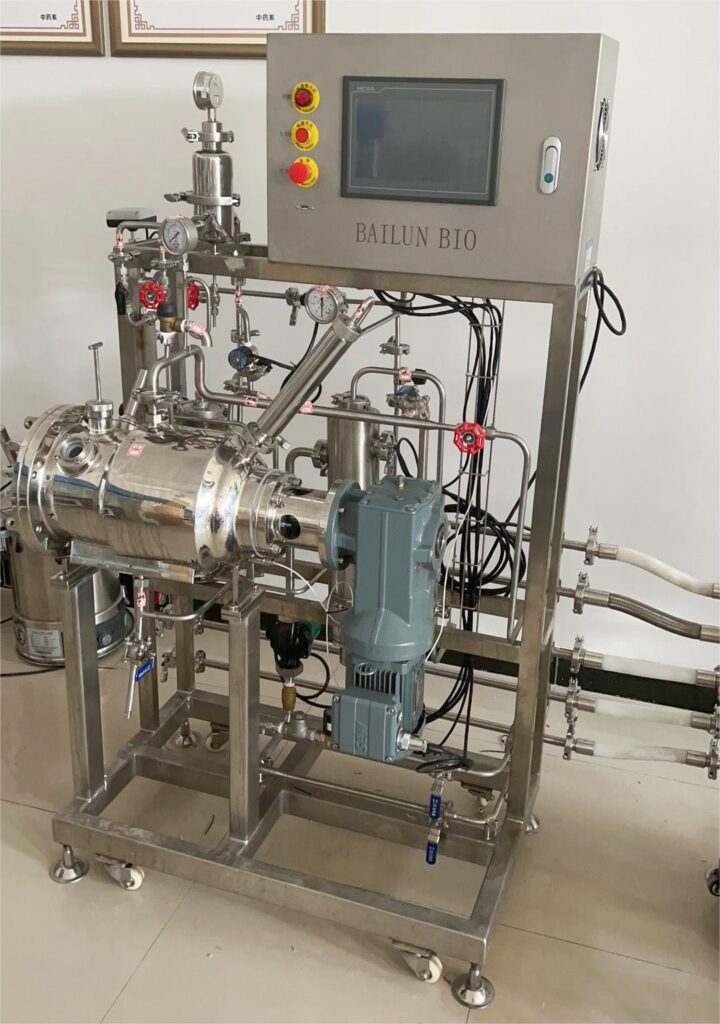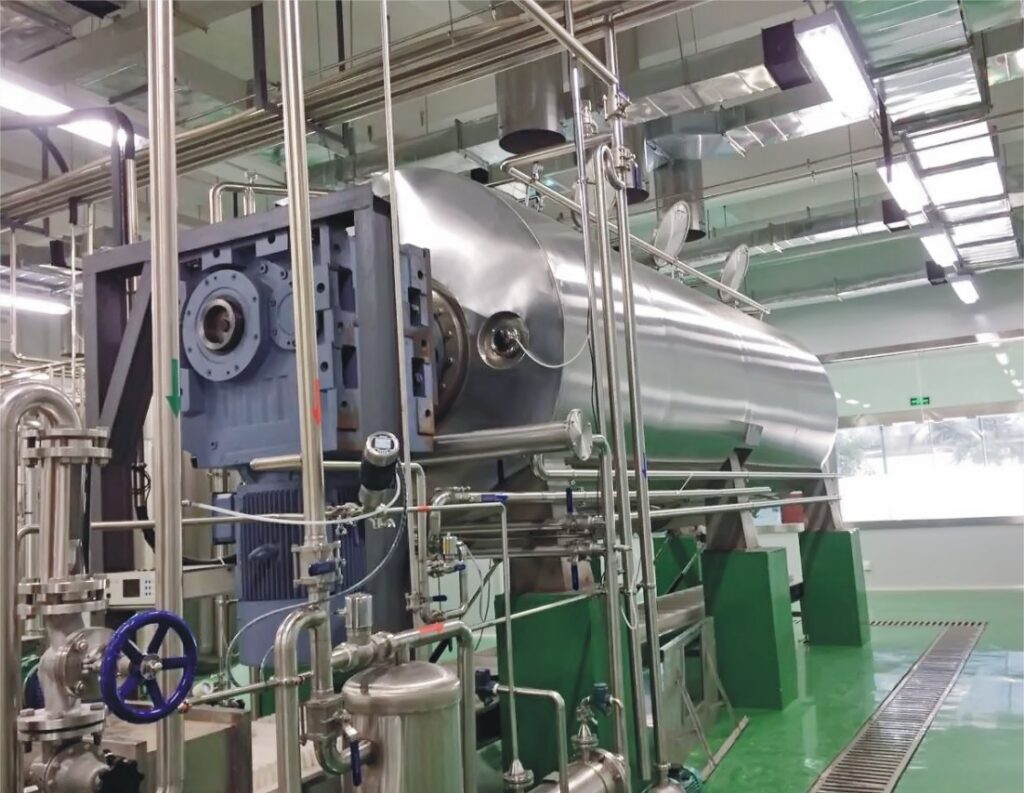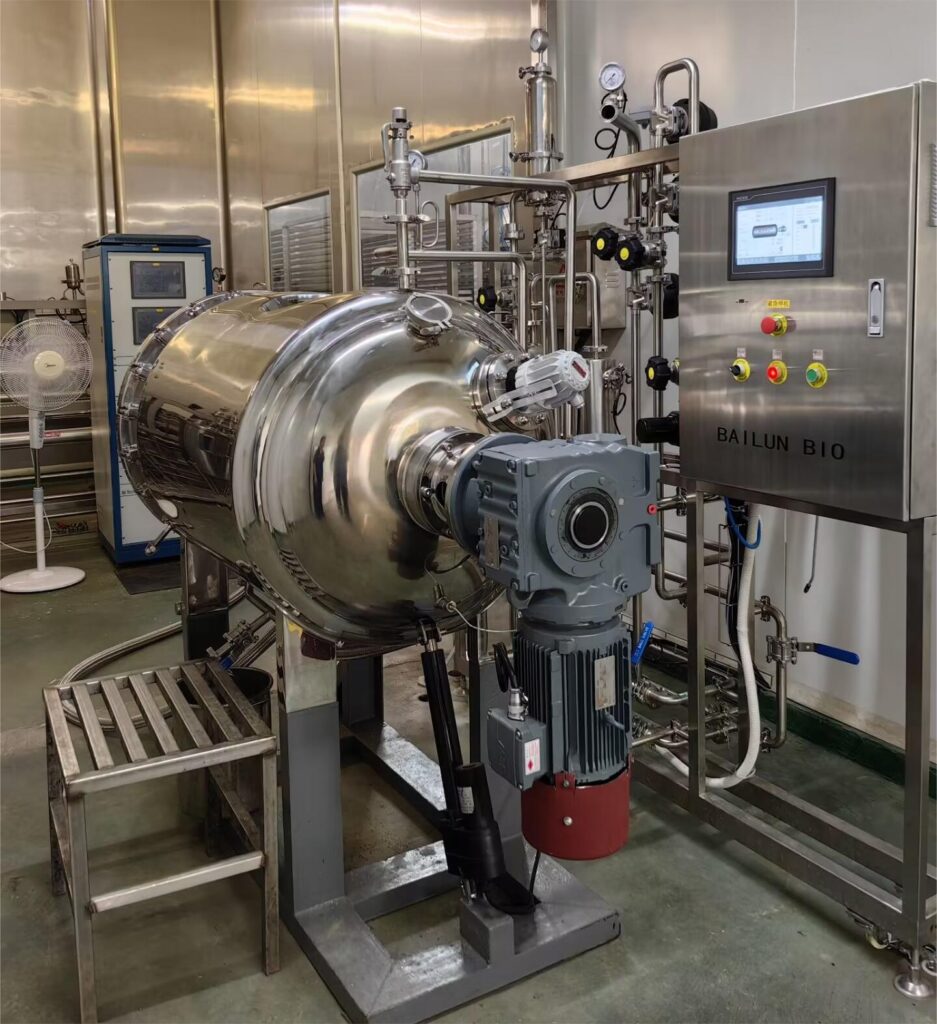
Unlike the liquid fermentation you might be familiar with, solid state fermentation uses a minimum amount of water and relies on microbes that grow on solid materials to produce a wide range of valuable products. From biofuels and enzymes to antibiotics and flavors, the applications of SSF are virtually endless.
If you’re curious about what makes the solid state fermentation process so unique, why industries are choosing it, or how it’s shaping the future of sustainable production, you’re in the right place. Here, we’ll dive into every aspect of SSF, exploring its mechanisms, applications, and the promising innovations that make it one of the most exciting advancements in bioprocess technology.
The Basics: What is Solid State Fermentation?
The solid state fermentation process is a type of microbial fermentation that occurs on a solid surface that has just enough moisture for the microbes to grow and flourish without being completely submerged.
The smallest example of SSF is a piece of bread that begins to sprout mould. Agricultural wastes such as maize cobs, rice husks, or wheat bran are commonly used as solid substrates in industrial settings, where the scale is considerably larger.
This procedure is especially alluring for several reasons.
- First off, the solid-state fermentation process is more ecologically friendly than conventional submerged fermentation techniques since it consumes less water.
- Second, SSF makes use of resources like crop leftovers and food industry byproducts that could otherwise be thrown away.
- Lastly, the special circumstances of SSF make it possible to produce stable, highly concentrated products such as bioethanol yeast and enzyme strains for SSF.
How Does the Solid State Fermentation Process Work?
There are multiple steps in the solid state fermentation process, and each is under strict control to guarantee the intended result. Here is a more detailed explanation of how SSF operates and what distinguishes each step:
Step 1: Substrate Selection and Preparation
The solid substrate serves as the cornerstone of SSF, giving the microorganisms stability and nourishment.
Selecting a substrate is essential; to promote microbial development, it must contain the proper ratio of nutrients, porosity, and surface area. Soybeans, paper pulp, and wheat bran are examples of common substrates. These substrates are occasionally altered or treated to improve their fermentation compatibility.
Step 2: Inoculation with Microorganisms
Once the substrate is ready, particular microorganisms are added to it. The type of bacteria, yeast, or fungus used depends on the final result.
For instance, the manufacturing of enzymes frequently involves the use of fungi such as Aspergillus niger, but the generation of bioethanol requires the use of yeast strains.
Based on their capacity to flourish in a solid-state setting and effectively generate the desired bio-product, the microorganisms are carefully chosen.
Step 3: Incubation and Fermentation
And now the magic starts. The infected solid substrate is put in a controlled setting, usually an SSF-specific bioreactor where variables like humidity, pH, and temperature are strictly regulated.
These variables are essential for microbial growth and for maximizing the production of desired products. For instance, to produce high-quality enzymes, the enzyme strains utilized in SSF may need a warmer, more humid environment.
Step 4: Harvesting and Product Extraction
The desired product, such as bioethanol, antibiotics, or organic acids, must be extracted following the incubation period. Downstream processing is necessary to purify the final product because SSF products are frequently combined with other substances in the substrate.
In this stage, the bio-product can be isolated in its most efficient form using filtration, centrifugation, or other separation procedures.

Why Choose Solid State Fermentation Over Submerged Fermentation?
While both SSF and submerged fermentation have their special benefits, for some applications, SSF fermentation is particularly well-suited. Let’s examine the reasons why SSF is preferred in many bioprocesses:
- Water Conservation: In comparison to submerged fermentation, SSF uses relatively much less water. This minimizes costs and supports sustainability initiatives, especially in areas where water is a limited resource.
- Product Stability: Bio-products and enzymes produced through SSF are generally more stable. The low water environment inhibits breakdown, which is a significant benefit in sectors like food processing and medicine.
- Efficient Oxygen Transfer: In SSF, oxygen can penetrate easily and get to the microorganisms since they’re not immersed in liquid. This facilitates their growth as well as the rate at which they metabolize, thus enabling higher productivity of some bio-products.
However, there are some limitations to using solid state fermentation process. For instance, the environmental conditions are more difficult to manage, and the process is often difficult to scale up. But, for most products especially those in enzyme, food and biofuel industries the benefits exceed these difficulties.
Recent Innovations in Solid State Fermentation
Although SSF has been in use for many years, new developments in technology are expanding its uses. The following fascinating developments are influencing solid state fermentation process going forward:
1. Advanced Bioreactors
SSF fermentation was previously only used for small-scale production due to the challenges associated with scaling up. However, new bioreactor designs like rotating drums and fluidized bed bioreactors give more control over parameters like temperature and oxygen, which makes the production of SSF on a large scale more possible. With the help of these bioreactors, enterprises can consistently create larger yields.
2. Genetically Engineered Microorganisms
Through the use of genetic engineering, researchers have created microbes that are more efficient in producing some bio-products. For instance, yeast that is used in bioethanol yeast and enzyme strains for SSF production have undergone modifications to withstand increased ethanol levels hence enhancing the yield.
3. Environmental Applications
The use of SSF fermentation in environmental biotechnology and waste management is among its most promising uses. By utilizing farm waste as the solid substrate, SSF not only lessens the amount of waste that ends up in landfills, but also turns it into useful products such as biofuels, biofertilizers, and bioplastics. This circular method is revolutionary to environmental sustainability.
Real-World Applications of Solid-State Fermentation
The solid state fermentation process has found its application in various industries due to its adaptability. Let’s look at how SSF is influencing food, pharmaceuticals, agriculture, and renewable energy.
1. Food Industry
SSF is extensively used to synthesize enzymes required for food processing in the food industry. For instance, amylases and proteases used to facilitate the breakdown of starch and proteins, are made using SSF for use in beer production, baking and dairy.SSF is also used to create distinctive flavours and textures in fermented foods.
2. Pharmaceuticals and Antibiotics Production
In the drug industry, SSF fermentation is used in the production of antibiotics, anti-cancer agents and bioactive compounds. For example, the antibiotic penicillin which transformed the world of medicine is produced through SSF. This procedure facilitates the production of high-potency compounds with low or even nonexistent contaminants making SSF a better approach in the production of pharmaceuticals.
3. Agriculture: Biofertilizers and Animal Feed
Using solid state fermentation processes to make animal feed and biofertilizers is crucial for agriculture. Biofertilizers generated through SSF improve soil quality by adding useful microorganisms, while animal feeds enhanced with enzymes enhance the growth and digestion of the Livestock. This sustainable method lessens the need for artificial feed additives and fertilizers encouraging environmentally friendly practices in farming.
4. Renewable Energy and Biofuels
One of the most successful sectors where SSF is essential and frequently used is bioethanol. By choosing yeast strains with high yields that are most suited for the production of ethanol, SSF can effectively transform available sugars in agricultural residues into ethanol providing a sustainable energy source that lessens the use of fossil energy.
Fermentation Products Produced by Bacteria in SSF
Even though fungi take center stage during the solid state fermentation process, bacteria contribute equally to the formation of a variety of bio-products through SSF. Let’s look into a longer list of products from bacterial fermentation and their special uses:
1. Lactic Acid
Lactobacillus and Streptococcus bacteria are known to produce lactic acid as they possess a high level of this chemical, which has versatile applications in different industries. It is used in food products such as yogurt, cheese, and fermented vegetables since it has a tangy taste and thickness. Besides food, lactic acid is widely used in cosmetics for its peeling effect, and in the pharmaceutical industry as a base for biodegradable products such as surgical sutures.
2. Ethanol and Acetic Acid
While yeast is the rockstar of ethanol in biofuels, some bacterial species can also produce ethanol, moreover, they can survive higher ethanol levels, which is beneficial for energy production. Then there’s acetic acid, which is produced by bacteria called Acetobacter aceti and is used to make vinegar, a very useful product for cleaning, cooking as well as preservation.
3. Bio-preservatives
Do you want to preserve food naturally? Some bacteria synthesise bio-preservatives, such as bacteriocins that have an inhibiting impact on spoilage organisms and pathogens. Lactobacillus species produce nisin, a naturally occurring preservative for foods such as cheese and canned veggies, enhancing defence without the use of artificial substances.
4. Vitamins
Another factor that efficiently replenishes essential vitamins is the solid state fermentation process using bacterial strains. For instance, Propionibacterium species synthesize vitamin B12, which is important for the functioning of the nerves and the production of red blood cells and Bacillus strains produce riboflavin ( vitamin B2) commonly used in food enrichment.
5. Enzymes
SSF bacteria are also capable of synthesizing enzymes which find application in anything from washing powders to processing of foods. For example, Bacillus subtilis is one of the most efficient producers of protease, an enzyme that has numerous uses in industries like detergent. Other enzymes like Amylase and lipase enzymes are employed in baking, brewing and biofuels, each assisting in making procedure efficient and more eco-friendly.
6. Organic and Amino Acids
You must have come across citric acid which is used in soft drinks and candies to give a sour feeling in your mouth, and butyric acid, used in medicine and the production of biofuel in the bacterial solid state fermentation process. Amino acids such as L-glutamic and L-lysine are produced from bacteria such as Corynebacterium glutamicum and Brevibacterium as supplements to animal feeds and nutritional food.
Lactic Acid Bacteria and Their Fermentation Products
Although Lactic acid bacteria (LAB) may not sound particularly fascinating, they are responsible for some of the most advantageous food and health products. These bacteria work effortlessly making lactic acid, which is important for food preservation, taste, and the alimentary canal. Here’s a closer look at LAB’s remarkable products and why they are so valuable:
1. Probiotics: A Boost for Gut Health
LAB is the backbone of most probiotic foods, which include yoghurt, kefir, kimchi, and sauerkraut. These LAB probiotics, when ingested, aid in regulating the gut’s microbiota, boosting immunity, lowering the danger of infections, and assisting with digestion. Many people now consider LAB-based probiotics as vital for everyday health, providing a natural means for preserving gut health.
2. Bio-preservatives: Naturally Extending Shelf Life
LAB are also excellent at synthesizing organic acids such as lactic acid, which possesses antimicrobial activity. By suppressing dangerous bacteria, these substances naturally preserve food, which makes LAB-based bio-preservatives a useful substitute for artificial preservatives. For individuals seeking natural food options, these LAB bio-preservatives help foods stay fresher for longer without the need for artificial additives.
3. Other Valuable Fermentation Products by LAB
LAB also manufacture bacteriocins such as nisin that are used in cheeses and canned foods to discourage spoilage as well as contamination by pathogens. Additionally,they produce exopolysaccharides (EPS), which improve the texture of foods like yoghurt and may have immune-boosting properties.
Environmental and Economic Benefits of Solid-State Fermentation
Another enlightening aspect of the solid state fermentation process is that it offers numerous benefits in terms of alignment with environmental sustainability objectives. Here’s how SSF contributes to a greener and more cost-effective future:
- Efficiency of resources: Making use of agricultural waste as a substrate reduces waste and the use of synthetic material. Its “waste-to-value” possibility makes it ideal for factories aiming at being environmentally friendly.
- Water and Energy Conservation: Since SSF needs less water and energy than submerged fermentation, it is more economical. Less use of water also means less wastage, which is a very important benefit for sectors looking for various strategies to reduce the environmental effect of their businesses.
- Cost-Effectiveness: For businesses trying to reduce expenses, SSF provides a method of making valuable products with minimal operational costs. Using inexpensive raw materials and cutting back on energy and water use helps businesses save a lot of money.

solid state fermentation tank
Future of the Solid State Fermentation Process: Opportunities and Challenges
In general, the concept of SSF is absolutely promising but there are obstacles to conquer. It is still difficult to scale up SSF methods for industrial use. Optimizing product yield and quality in large-scale SSF reactors requires careful control of variables like temperature and humidity, which can be particularly difficult.
To overcome these challenges, however, research is still being conducted. Further automation technology development and bioreactor design improvement are expected to make SSF more scalable and reliable. Genetic engineering is also making successes in the development of high-performance microorganisms characterized by elevated levels of tolerance to stress and productivity rates.
Looking forward, SSF could expand into new fields, including bioplastics, personalized medicine, and sustainable textiles. Imagine a world where agricultural waste doesn’t end up in landfills but instead becomes a valuable resource for producing environmentally friendly products.
Conclusion: The Future is Solid State Fermentation
The solid state fermentation process is not merely a scientific idea; it is a game-changing technology that is changing the way we make antibiotics and biofuels. By utilizing minimal resources, reducing waste, and leveraging renewable materials, SSF embodies the ideals of sustainable production. As we continue to advance in bioprocess technology, SSF stands as a beacon of what’s possible when we combine nature’s processes with modern science.
Unlock High-Yield, Sustainable Production with BaiLun Solid State Fermenters
Ready to achieve greater efficiency and product quality? BaiLun’s Solid State Fermenters are designed for optimal performance in industries like biofuels, enzymes, and pharmaceuticals. With advanced control features and sustainable design, our fermenters help you reduce waste and maximize output.
Take your fermentation process to the next level. Contact Us today to learn how our Solid State Fermenters can transform your production!


